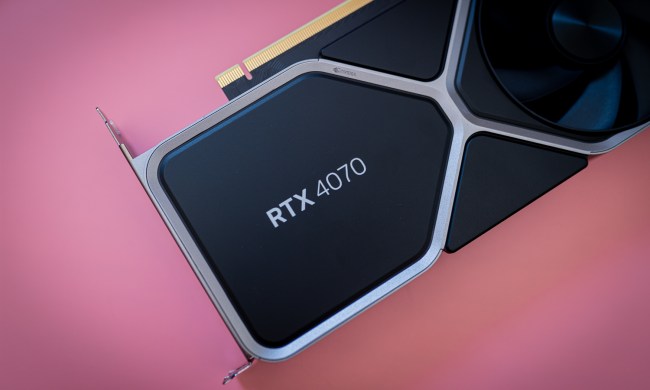The latest refresh to Nvidia’s GeForce GTX 1650 graphics card could reveal that the company may not have a budget-price option available when it debuts its next-generation graphics architecture, which will launch with the RTX 3000 graphics cards. The recently launched GeForce GTX 1650 Ultra from manufacturer Galax suggests that Nvidia may be trying to get rid of excess RTX silicon prior ahead of the launch of an RTX 3080 later this year.
While prior versions of the humble GTX 1650 variant used the TU116 silicon, the new Galax card uses the TU106 chip, which is the same chip that Nvidia employs on its higher-end RTX 2070 silicon. The new Galax card also comes with a higher TDP of 90W because of the upgraded silicon inside. But despite using the Turing-based cores, the Galax GTX 1650 Ultra won’t perform like an RTX 2070. In this case, it appears that the ray tracing and CUDA cores that come standard on the RTX 2070 may have been purposely turned off to make the silicon fit within the specifications of Nvidia’s GTX 1650 line, according to PC Gamer.

Nvidia’s practice of re-purposing premium silicon for use in lower-end GPUs is not unusual, and this is consistent with the broader chip industry. Intel has been known to turn off cores on high-end processors and sell those parts in lower-end models when there is an excess in inventory.
Here, it’s unclear if Nvidia is experiencing a glut due to over-production or lack of demand, or if it’s just turning off cores on chips that didn’t pass the company’s stringent test for use in the RTX 2070 cards. If the latter is the case, the company could — in effect — recycle the parts by turning off non-relevant features and using it in the GTX 1650 range. This will help Nvidia clear out excess inventory without having to slash prices on its current range.
This news may be disappointing for Nvidia RTX gamers looking for an affordable option once the Ampere GPU architecture debuts, this practice — which could mean that a budget RTX 3000 series card won’t be available this year — shouldn’t come as too big of a surprise. Historically, Nvidia staggers the launch of its graphics card. With the RTX 2000 series launch, for example, Nvidia’s more premium cards, like the RTX 2080 series, were available first. Only after the RTX 2080 launch did Nvidia offer the midrange 2070 and budget-friendly 2060 cards.
We expect a similar release cadence once Ampere debuts on consumer graphics, which is expected to happen later this year. This means that a budget-friendly RTX 3000 model may not debut until 2021.



